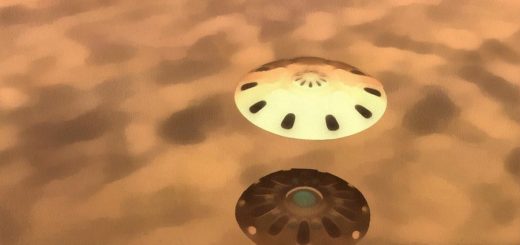Image: Protecting the Meteosat Third Generation–Imaging satellite from the sun

From ESA’s Materials and Electrical Components Laboratory—one of a suite of labs based at the ESTEC technical center in Noordwijk, the Netherlands—a view from an intricate test campaign for the next generation of European weather satellites.
The near infrared detector assembly of the Flexible Combined Instrument (FCI) imager aboard the Meteosat Third Generation—Imaging (MTG—I) satellite was found to be susceptible to unwanted “stray light” from the sun.
A solution was proposed to reduce this vulnerability: a very thin metal mask would be glued atop the assembly, with carefully designed slits that would allow light to penetrate only in the desired areas, minimizing the entry of stray light.
But the feasibility of this solution needed to be tested, in order to demonstrate if the alloy cover would remain securely in place as incoming direct sunlight heats it up repeatedly during moments of sun intrusion.
Accordingly, a new feature was added to the Electrostatic Discharge (ESD) facility, part of the Materials and Electrical Components Lab. Originally designed as a vacuum chamber to expose samples to mono-energetic electrons down to cryogenic temperature, the ESD was upgraded to host an optical rack to hold a light source to simulate sunlight exposure onto the sample. Thanks to this—removable—option, the detector could be exposed to light of varying intensity across thousands of cycles.
The mammoth FCI—under the responsibility of Thales Alenia Space—will provide state of the art measurements of Earth’s atmosphere across 16 visible and infrared channels. Developed in conjunction with Eumetsat, Europe’s weather satellite organization, these MTG imaging satellites will be accompanied by additional MTG “sounding” satellites in geostationary orbit to provide simultaneous vertical profiles of the atmosphere.



 Creators of mankind
Creators of mankind Description of “Tall white aliens”
Description of “Tall white aliens” Where they came from?
Where they came from? About hostile civilizations
About hostile civilizations The war for the Earth
The war for the Earth “Tall white aliens” about eternal life
“Tall white aliens” about eternal life Video: “Nordic aliens”
Video: “Nordic aliens” Aliens
Aliens Alien encounters
Alien encounters The aliens base
The aliens base UFO
UFO Technology UFO
Technology UFO Underground civilization
Underground civilization Ancient alien artifacts
Ancient alien artifacts Military and UFO
Military and UFO Mysteries and hypotheses
Mysteries and hypotheses Scientific facts
Scientific facts


















